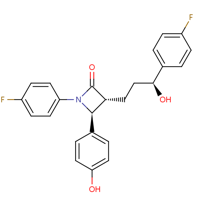CFH and Macular Degeneration
Chemical Genetics
This web page was produced as an assignment for Gen677 at UW-Madison Spring 2010.
To examine CFH through the eyes chemical genetics, I searched DrugBank's database for small molecules known to interact with CFH's protein and gene sequences. DrugBank identified a possible gene interaction domain:
DrugBank identified several possible protein interacting domains, which include:
Complement Control Protein Target
One of the chemicals that interacts with the complement control protein domain is O2-Sulfo-Glucuronic Acid. It is an experimental small molecule that has been shown to inhibit the classical and alternative pathways of complement activation by binding C3b and C4b. It also targets hepatocyte growth factor, heparin-binding growth factor 1, and heparan sulfate glucosamine 3-O-sulfotransferase 3A1. Because this chemical affects the functions of other proteins involved in crucial body processes in the liver and in mitochondria, this might not be a good drug for targeting CFH.
- Niemann-Pick C1-like protein 1
DrugBank identified several possible protein interacting domains, which include:
- P-selectin
- Membrane cofactor protein
- Complement control protein
- E-selectin
- Beta-2-glycoprotein 1
- Complement decay-accelerating factor
- Complement factor B
Complement Control Protein Target
One of the chemicals that interacts with the complement control protein domain is O2-Sulfo-Glucuronic Acid. It is an experimental small molecule that has been shown to inhibit the classical and alternative pathways of complement activation by binding C3b and C4b. It also targets hepatocyte growth factor, heparin-binding growth factor 1, and heparan sulfate glucosamine 3-O-sulfotransferase 3A1. Because this chemical affects the functions of other proteins involved in crucial body processes in the liver and in mitochondria, this might not be a good drug for targeting CFH.
Another interacting chemical is N,O6-Disulfo-Glucosamine. It has the same function and targets the same proteins as O2-Sulfo-Glucuronic Acid as well as targeting heparin-binding growth factor 2, cardiotoxin, and annexin A5. Because N,O6-Disulfo-Glucosamine has a longer list of interacting proteins than O2-Sulfo-Glucuronic Acid, it may also not be a good drug for targeting CFH.
Reference:
"CFH." DrugBank: Home. Web. 17 May 2010. <http://www.drugbank.ca/>.
"CFH." DrugBank: Home. Web. 17 May 2010. <http://www.drugbank.ca/>.



